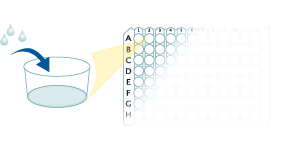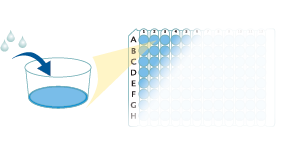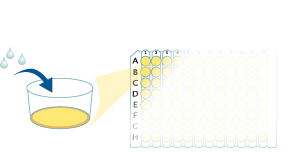 全部商品分类
全部商品分类



 下载产品说明书
下载产品说明书 下载SDS
下载SDS 用小程序,查商品更便捷
用小程序,查商品更便捷


 收藏
收藏
 对比
对比 咨询
咨询Product Summary
Sample Values
Cell Culture Supernates - Cell culture supernates from the following unstimulated cell lines were tested for natural BMP-2. No BMP-2 was detected.| Cell Lines | Type | Growth Conditions |
| ATDC5 | Mouse chondrogenic | :1 mixture of F-12 and DMEM + 5% FBS, L-glutamine, penicillin, and streptomycin |
| MCF-7 | Human breast cancer | 1:1 mixture of high glucose DMEM and F-12 + 10% FBS, L-glutamine, penicillin, and streptomycin |
| MDA-MB-453 | Human breast cancer | RPMI + 10% FBS, L-glutamine, penicillin, and streptomycin |
| ST-2 | Mouse-bone marrow stroma-cell derived | RPMI + 10% FBS, L-glutamine, penicillin, and streptomycin |
| U2OS | Human osteosarcoma | Grown to confluency in McCoy's 5a media + 15% FBS, L-glutamine, penicillin, and streptomycin |
Recovery
The recovery of recombinant human BMP-2 spiked to levels throughout the range of the assay in various matrices was evaluated.
| Sample Type | Average % Recovery | Range % |
|---|---|---|
| 2 M Guanidine-HCI (n=1) | 98 | 94-101 |
| 2 M Urea (n=1) | 101 | 92-106 |
| Cell Culture Media (n=4) | 102 | 94-110 |
Linearity
Scientific Data
Assay Procedure
Refer to the product- Prepare all reagents, standard dilutions, and samples as directed in the product insert.
- Remove excess microplate strips from the plate frame, return them to the foil pouch containing the desiccant pack, and reseal.
- Add 100 µL of Assay Diluent to each well.
- Add 50 µL of Standard, control, or sample to each well. Cover with a plate sealer, and incubate at room temperature for 2 hours on a horizontal orbital microplate shaker.
- Aspirate each well and wash, repeating the process 3 times for a total of 4 washes.
- Add 200 µL of Conjugate to each well. Cover with a new plate sealer, and incubate at room temperature for 2 hours on the shaker.
- Aspirate and wash 4 times.
- Add 200 µL Substrate Solution to each well. Incubate at room temperature for 30 minutes on the benchtop. PROTECT FROM LIGHT.
- Add 50 µL of Stop Solution to each well. Read at 450 nm within 30 minutes. Set wavelength correction to 540 nm or 570 nm.





BMP-2 Quantikine ELISA Kit Summary

Background: BMP-2
BMPs are secreted signaling molecules that comprise a subfamily of the TGF-beta superfamily and were originally identified as regulators of cartilage and bone formation. There are at least 20 structurally and functionally related BMPs, most of which play roles in embryogenesis and morphogenesis of various tissues and organs. Biologically active BMPs are usually homodimers containing a characteristic cysteine knot structure. Heterodimers, BMP-2/BMP-7 and BMP-4/BMP-7 have also been suggested to exist and function in vivo. They are more potent inducers of bone formation than their respective homodimers. In addition, heterodimers, but not homodimers, are ventral mesoderm inducers. Heterodimer activity may be mediated by a different or additional receptor subtype.
Decapentaplegic (Dpp) is one of at least five TGF-beta superfamily ligands identified in the Drosophila genome. Dpp, a functional ortholog of mammalian BMP-2 and BMP-4, is a morphogen and plays an essential role in Drosophila development. Dpp regulates embryonic dorsal-ventral polarity and is required for gut morphogenesis and outgrowth and patterning of imaginal disks.






